Arrive Cambodia at 7:40 PM And Spend Three Nights In Cambodia (Page Four)

The Cambodian Flag
Did You Know? - Since around 1850, the Cambodian flag has featured a depiction of Angkor Wat in the center. The current flag, with a blue border and red central (the stripes are in the ratio 1:2:1) was adopted following Cambodia's independence in 1948. It was used until October 9, 1970, when a new flag was introduced for Lon Nol's Khmer Republic that lasted until the takeover of the Khmer Rouge in 1975. The subsequent state of Democratic Kampuchea, which existed from 1975 to 1979, used a red flag with a three-towered Angkor Wat design retained in yellow.
The People's Republic of Kampuchea was established in 1979, after the Vietnamese invasion of Cambodia. The Kampuchean National United Front for National Salvation (FUNSK) revived the flag adopted by the Khmer Issarak in the days of anti-French resistance for the new state. This flag had the same color pattern as the DK flag, but with a yellow five-towered Angkor Wat silhouette. When the PRK renamed itself as "State of Cambodia" (SOC) in 1989, the flag's lower half became blue. The UNTAC flag was used during the 1992-1993 transitional period along with the flag of the SOC within Cambodia.
In 1993 the 1948 Cambodian flag was readopted. The current Cambodian flag, together with that of Afghanistan, hold the distinction of being the only two flags in the world to feature a building in their design. Red and blue are traditional colors of Cambodia.

The King's Coast Of Arms
Did You Know? - The Golden sword atop two ceremonial bowls, above it is the sacred "Aum", below is a laurel wreath and the Royal Order. The Arms is supported by two creatures a gajasingha and a singha, they are holding two five-tiered royal umbrellas. Atop the arms is the Royal crown with rays of light emitting from it. Below is a ribbon with the words in Khmer script: "Preah Chao Krung Kampuchea": "King of the Kingdom of Cambodia".
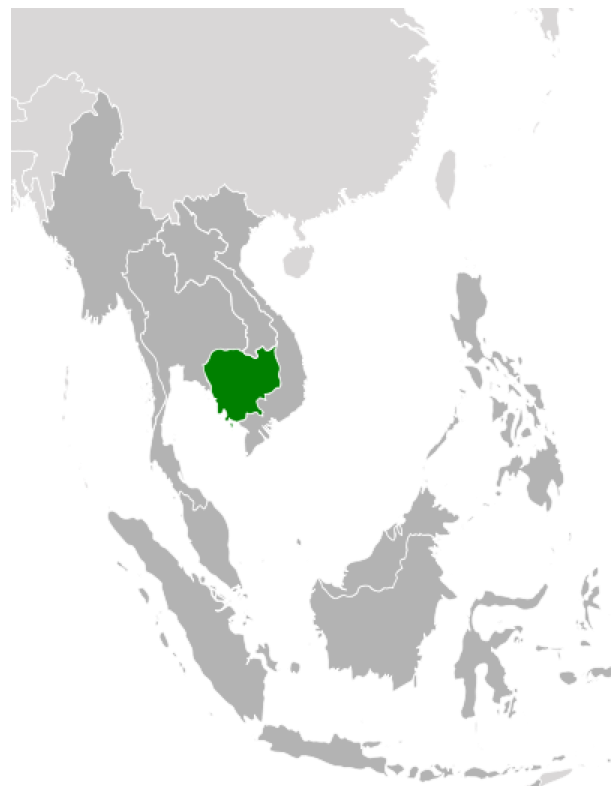
Where is Cambodia??
We are 8194.74 miles
from home
Time To Crash ... It's Been A Long Day!

The hotel was a little laid back... NOT!
Siem Reap Here We Are

Did You Know? - Siem Reap (Khmer: ក្រុងសៀមរាប) is the capital city of Siem Reap Province in northwestern Cambodia, and is the gateway to Angkor region. Siem Reap has colonial and Chinese-style architecture in the Old French Quarter, and around the Old Market. In the city, there are traditional Apsara dance performances, craft shops, silk farms, rice-paddy countryside, fishing villages and a bird sanctuary near the Tonle Sap Lake.
Siem Reap today, being a popular tourist destination, has a large number of hotels and restaurants. Most smaller establishments are concentrated around the Old Market area, while more expensive hotels are located between Siem Reap-Angkor International Airport and the town along National Road 6. There are a variety of mid-range hotels and restaurants along Sivatha boulevard, and mid budget to mid-range hotels in the Phsar Leu area.
The name Siem Reap literally means "Siam Defeated". These days, however, the only rampaging hordes are the tourists heading to the Angkor Archaeological Park . This once quaint village has become the largest boomtown and construction site in Cambodia. It is quite laid-back and a pleasant place to stay while touring the temples. It is a nice compromise between observing Cambodian life and enjoying the amenities of modern services and entertainment, thanks to a large expatriate community. Since Siem Reap is a major tourist destination, prices in some instances are higher than elsewhere in Cambodia .
Day One (February 24th, 2012) - Raffles Hotel Breakfast Touring Ankor Wat Temples
Did You Know? - Angkor Wat lies 5.5 kilometres (3.4 mi) north of the modern town of Siem Reap, and a short distance south and slightly east of the previous capital, which was centred at Baphuon. It is in an area of Cambodia where there is an important group of ancient structures. It is the southernmost of Angkor's main sites.
The initial design and construction of the temple took place in the first half of the 12th century, during the reign of Suryavarman II (ruled 1113 – c. 1150). Dedicated to Vishnu, it was built as the king's state temple and capital city.
As neither the foundation stela nor any contemporary inscriptions referring to the temple have been found, its original name is unknown, but it may have been known as Vrah Vishnu-lok ( literally "Holy Vishnu'-Location'", Old Khmer' Cl. Sanskrit). after the presiding deity. Work seems to have ended shortly after the king's death, leaving some of the bas-relief decoration unfinished.
In 1177, approximately 27 years after the death of Suryavarman II, Angkor was sacked by the Chams, the traditional enemies of the Khmer. Thereafter the empire was restored by a new king, Jayavarman VII, who established a new capital and state temple (Angkor Thom and the Bayon respectively) a few kilometres to the north.
In the late 13th century, Angkor Wat gradually moved from Hindu to Theravada Buddhist use, which continues to the present day. Angkor Wat is unusual among the Angkor temples in that although it was somewhat neglected after the 16th century it was never completely abandoned, its preservation being due in part to the fact that its moat also provided some protection from encroachment by the jungle.

Did You Know? - Angkor Wat (Khmer: អង្គរវត្ត) is the largest Hindu temple complex in the world. The temple was built by King Suryavarman II in the early 12th century in Yasodharapura (Khmer: យសោធរបុរៈ, present-day Angkor), the capital of the Khmer Empire, as his state temple and eventual mausoleum. Breaking from the Shaivism tradition of previous kings, Angkor Wat was instead dedicated to Vishnu. As the best-preserved temple at the site, it is the only one to have remained a significant religious centre since its foundation – first Hindu, dedicated to the god Vishnu, then Buddhist. The temple is at the top of the high classical style of Khmer architecture. It has become a symbol of Cambodia,[1] appearing on its national flag, and it is the country's prime attraction for visitors.
Angkor Wat combines two basic plans of Khmer temple architecture: the temple mountain and the later galleried temple, based on early Dravidian Architecture, with key features such as the Jagati. It is designed to represent Mount Meru, home of the devas in Hindu mythology: within a moat and an outer wall 3.6 kilometres (2.2 mi) long are three rectangular galleries, each raised above the next. At the centre of the temple stands a quincunx of towers. Unlike most Angkorian temples, Angkor Wat is oriented to the west; scholars are divided as to the significance of this. The temple is admired for the grandeur and harmony of the architecture, its extensive bas-reliefs, and for the numerous devatas adorning its walls.
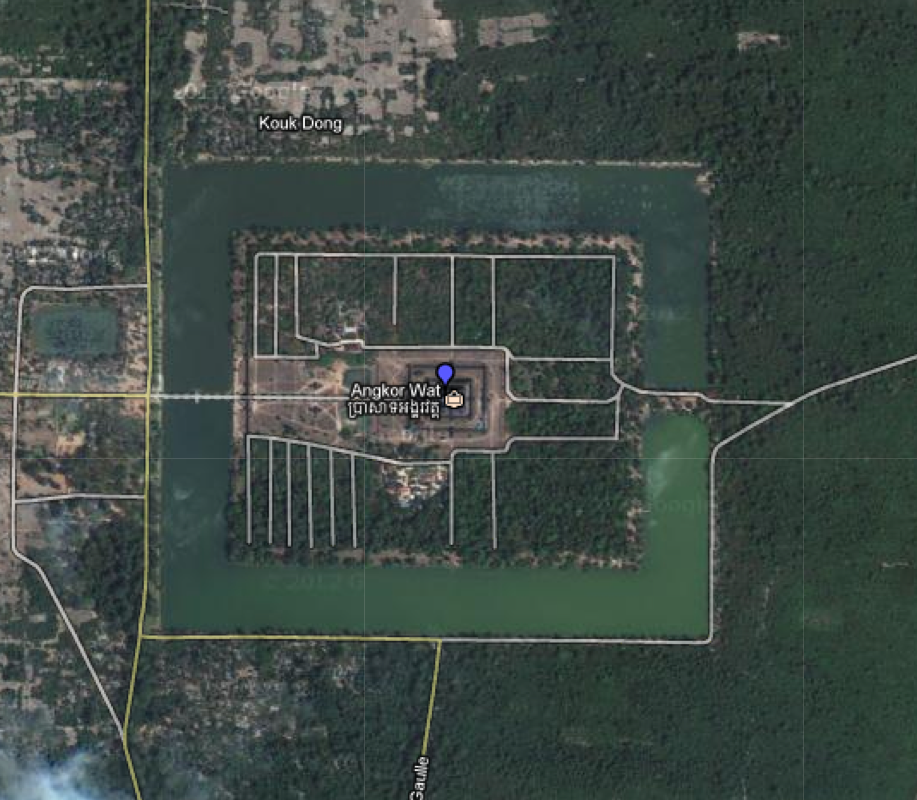
An aerial view of the temple grounds

Angkor Wat in 1866, shortly after its "discovery" by French archaeologists.

Wheu... It's hot here! On the road crossing the moat and the entrance to the temple complex...

Ankor Wat is large
... This is the main entrance and gate to the temple

The main gate entrance to the temple

It's a vast complex... This is one of the libraries on the grounds
Did You Know? - Angkor Wat is a miniature replica of the universe in stone and represents an earthly model of the cosmic world. The central tower rises from the center of the monument symbolizing the mythical mountain, Meru, situated at the center of the universe. Its five towers correspond to the peaks of Meru. The outer wall corresponds to the mountains at the edge of the world, and the surrounding moat the oceans beyond.

Amazing recovery from the forests that took it over for years
Did You Know? - Angkor Wat occupies a rectangular area of about 208 hectares (500 acres) defined by a laetrile wall. The first evidence of the site is a moat with a long sandstone causeway (length 250 meters, 820 feet; width 12 meters, 39 feet) crossing it and serving as the main access to the monument. The moat is 200 meters (656 feel) wide with a perimeter of 5.5 kilometers (3.4 miles).

A little wood replaced the worn out stone steps

Prayers go on all the time.... Good way to pass the day

The buildings are not small

The grounds are fairly complex


Easy does it there Tom... One slip and its...... bam bam slam splat

Easy as pie

Where Is Tom???
Did You Know? - "Angkor Wat" is sometimes used to refer to the whole collection of abandoned cities and temple complexes, spread over more hundreds of square kilometres.





Intricate architecture
Did You Know? - It was not until after World War II, when archaeologist Bernard Groslier made aerial surveys of the area, that the full extent of Angkor was comprises 70 monuments scattered over an area of 200 square Km. The complex tombs, temple, palaces, moats reservoirs, and causeway was built over a period of 400 years. There’s nothing like Angkor in Southeast Asia. Only two monument complexes come close: 9th-century Borobodur in Indonesia, and 11th century Pagan in Burma.

Perhaps a little overgrown?
Did You Know? - The ruined temple of Ta Prohm, built by king Jayavarman VII, is one of the most atmospheric to be found in the hot and humid forests of Angkor. Over the centuries, huge trees have invaded the temple buildings and now their vast root systems embrace crumbling walls.


All the Kings horses and all the Kings men....




Bunnyholds up the tree

Guardians at the temple doors

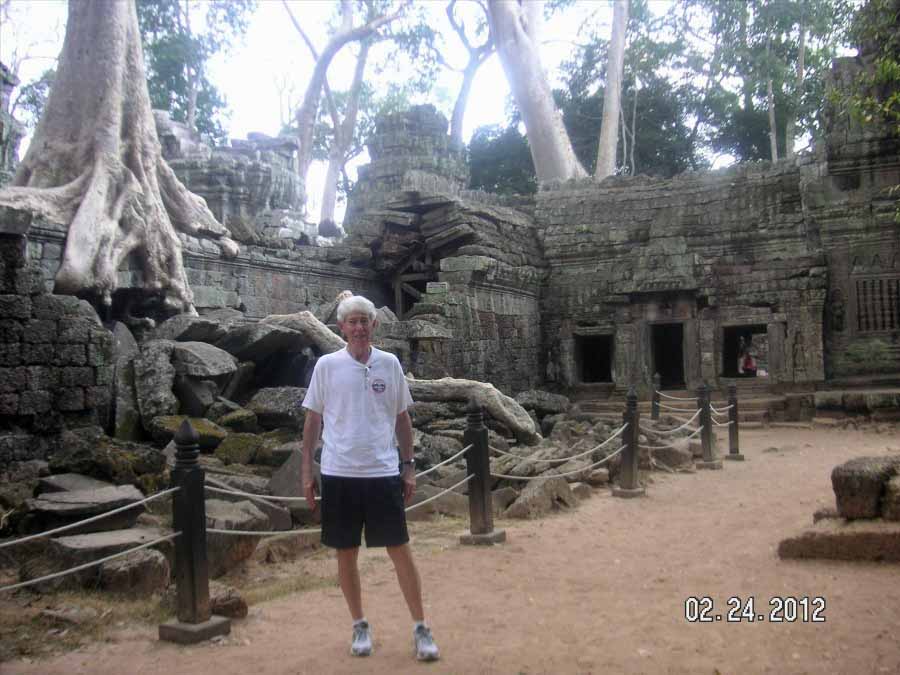
The trees have taken over

Day Two (February 25th, 2012)

Unwinding.... Maybe we should get our feet eaten by the local fish? Waht do you say Bunny?

Something is fishy here
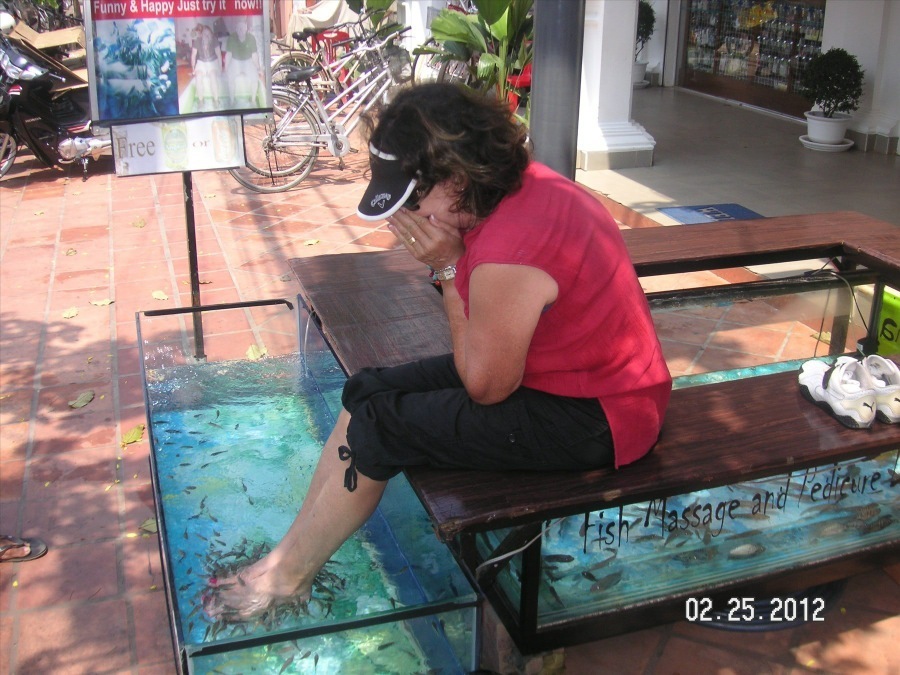
Fish massage and Pedicure
Did You Know? -
After a long day of climbing around temple ruins, a relaxing foot massage or a reinvigorating afternoon at the spa can be just what the doctor ordered. Massage for health and relaxation is a time-honored tradition throughout Southeast Asia with Cambodia offering its own distinctive traditions in massage therapy.
Siem Reap has several massage shops and spas catering to visitors. And don’t miss the latest smile inducing massage craze, fish massage, now available at several locations, especially around Pub Street. Immerse your feet in a pool of water and let hundreds of nibbling fish tickle away dead skin. Massage and reflexology shops are located across the town, especially in the Old Market area and along Sivutha Blvd.

These puppies are going to have a real meal!
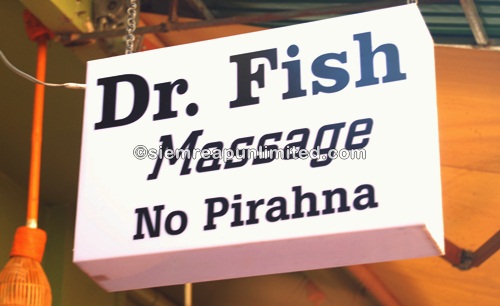

Yummy!
Time For A City Tour
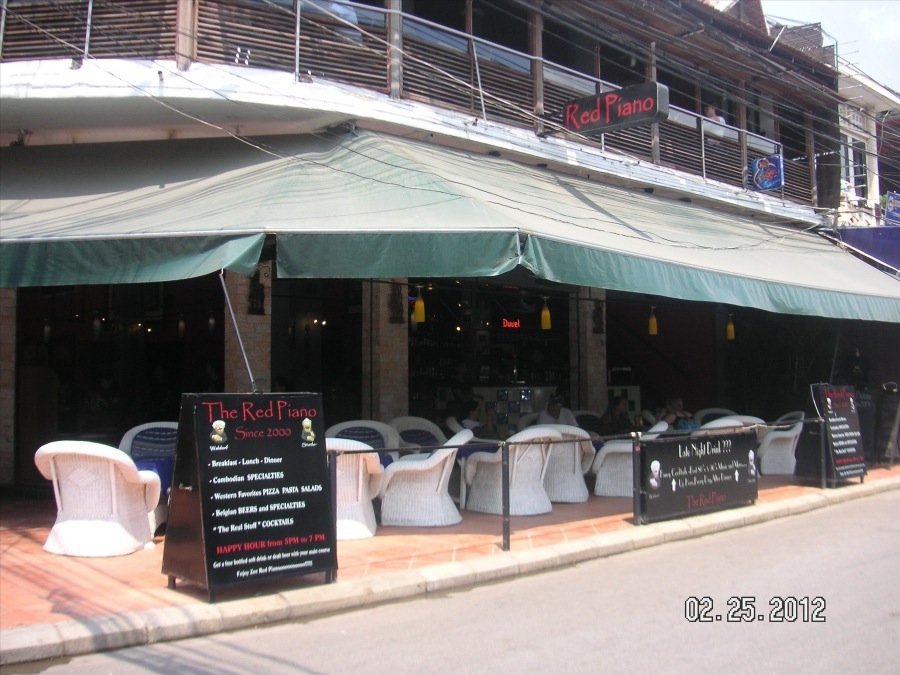
The Red Piano - No 341, 50 m Northwest of the Old Market, Svay Dangkom,
Mondul I, Siem Reap, Cambodia
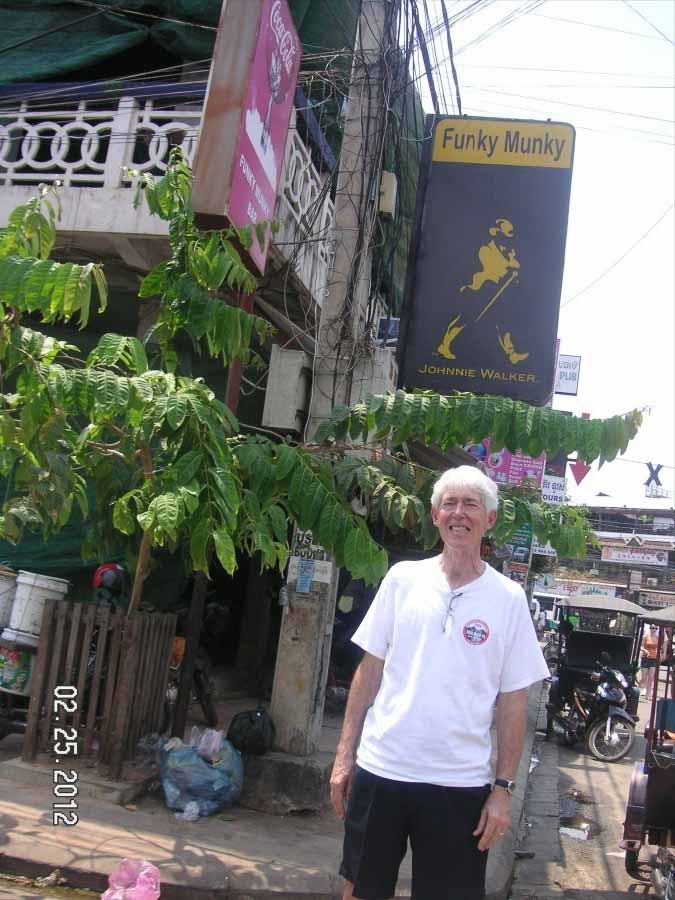
Real food! A Brit pub with a flair for food. Sample the brilliant build-your-own burgers, or try the slightly scary ‘Cardiac Arrest’. There’s truly funky décor, with artsy film posters, and a cocktail menu created for cheeky monkeys.
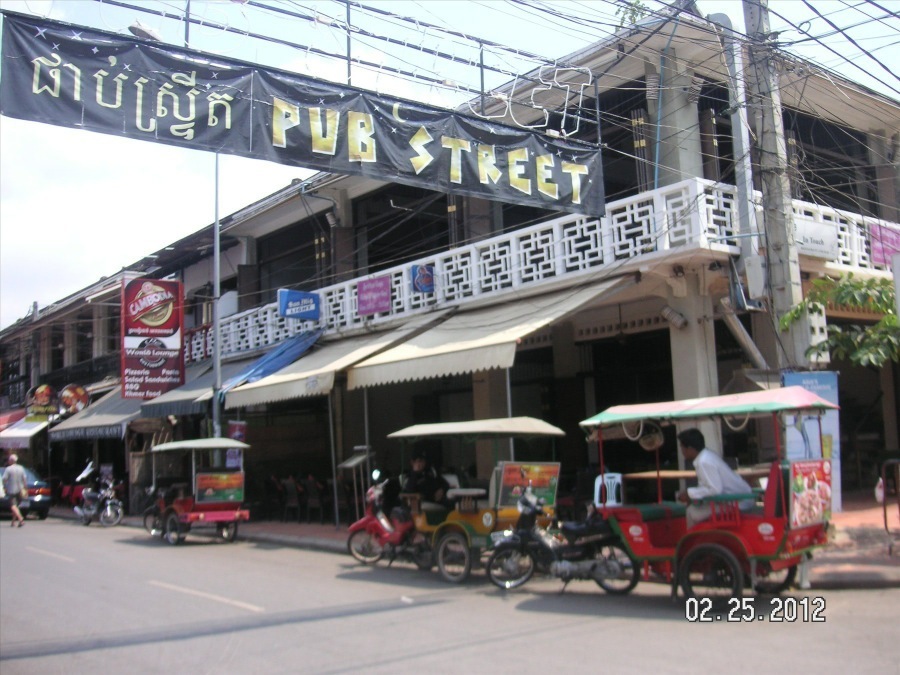
Pub Street as its name implies
Did You Know? -
After the sun goes down, the focus shifts firmly a block east of the Old Market to the 'Pub Street' and the nearby alleys, so named for the numerous and varied restaurants and pubs that line Street 8. It all began in 1998 when Angkor What? Bar opened its doors - the lone pub on an otherwise quiet street. These days Pub Street is packed end to end with restaurants, boutiques, shops and pubs as are the many of the connecting alleys and passages, each with its own special character.
You can find all kinds of cuisines on and around Pub Street including Khmer, Thai, French, Vietnamese, Indian, Italian and a variety of other international foods. Most of the bars are open all day but really get going around 5:00PM as people return from the temples and come to take advantage of the various happy hour deals. In the later evening the Pub Street is blocked to motor traffic, allowing pedestrians to stroll easily. It's then the street really comes alive as the curbside seating at the fill and the bars crank up the music. The whole area is the center of nightlife in Siem Reap these days with most places st
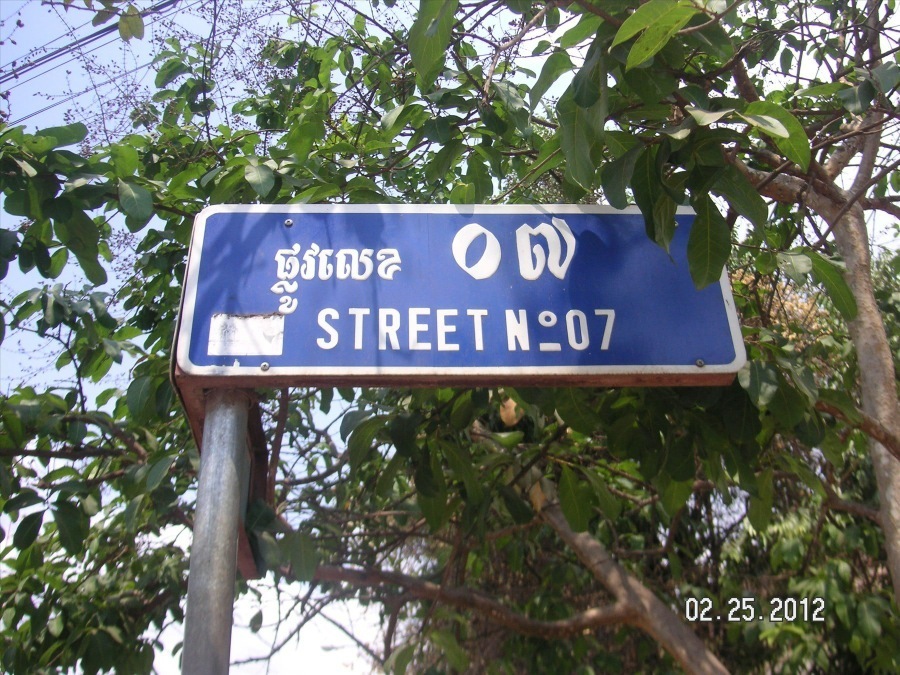
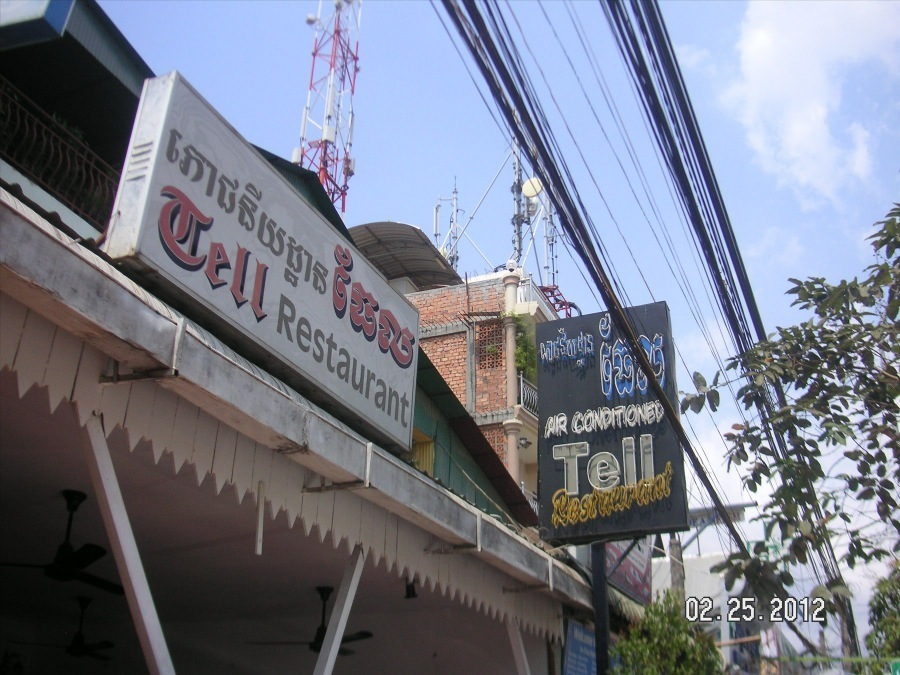

At the hotel... Time to freshen up!
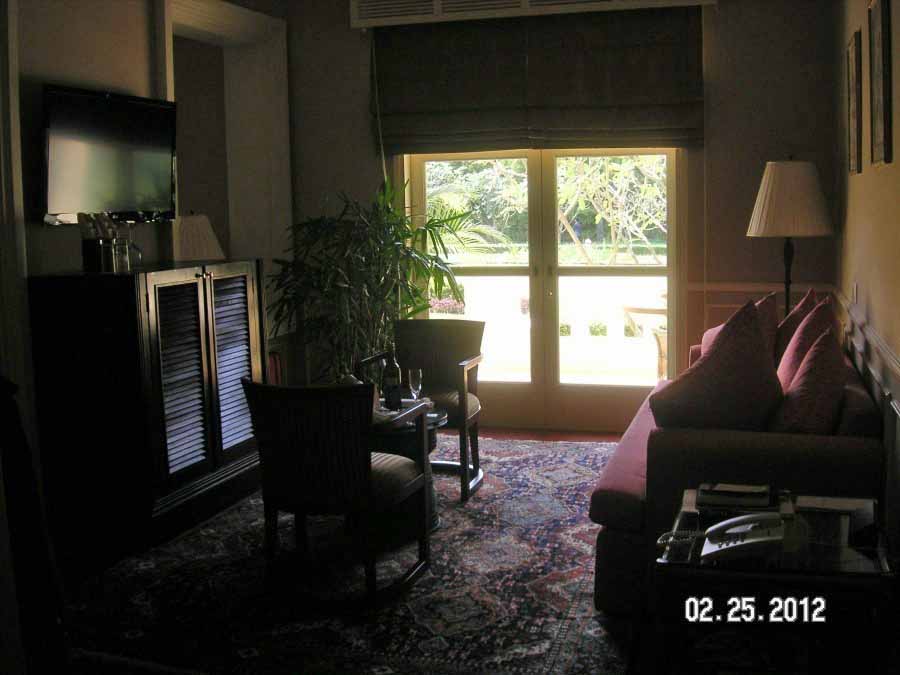
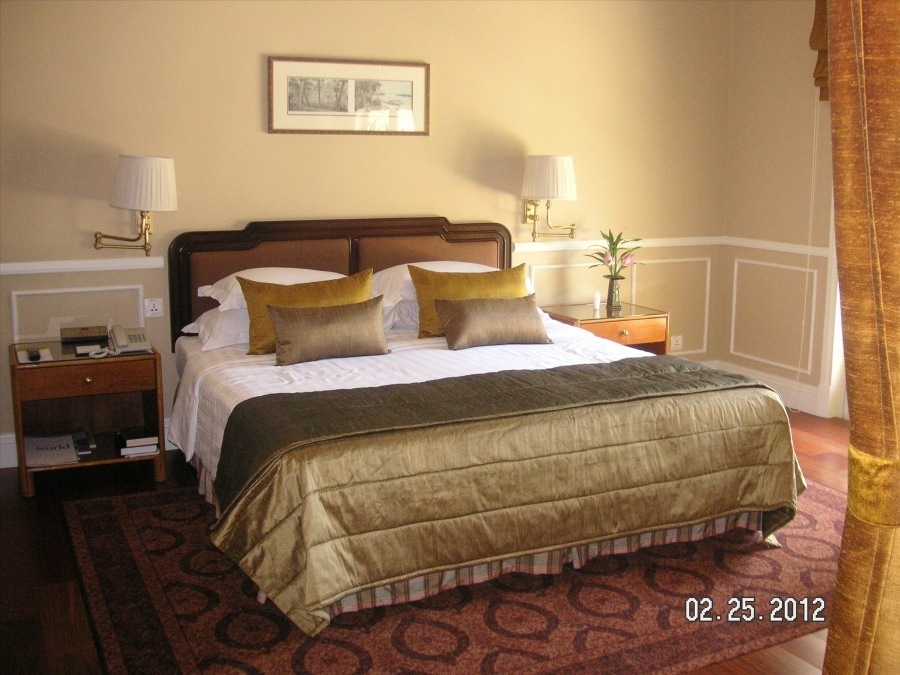
Crash time???
Did You Know? - Located in the heart of Siem Reap, Raffles Grand Hotel d'Angkor is just eight kilometers from the famed Angkor Wat, and eight kilometers from Siem Reap International Airport. It is a simple 10 minute walk down a beautiful riverside boulevard, to the main market centre and other town attractions.
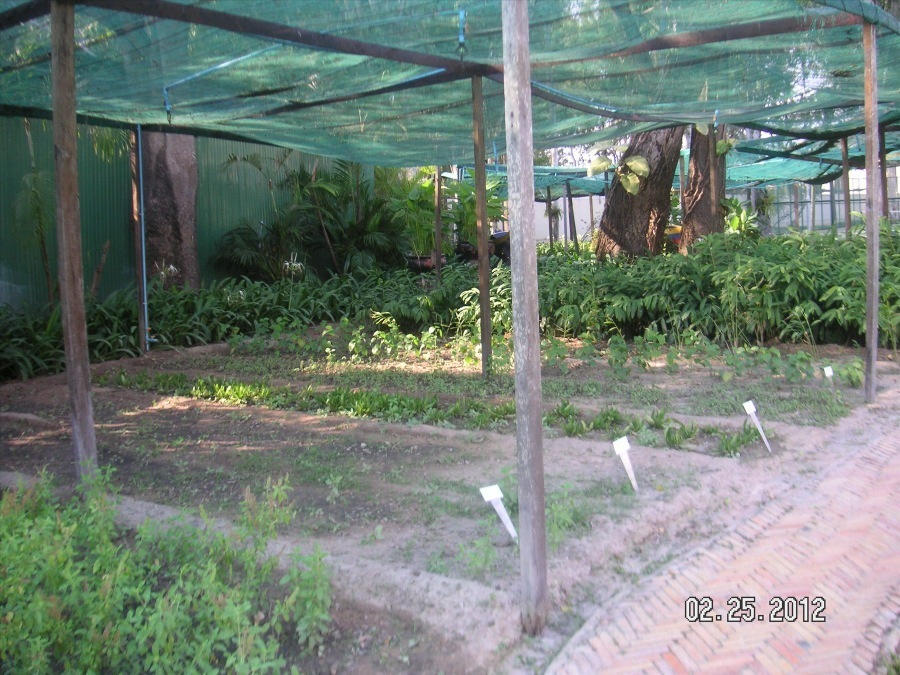
Walking the grounds

"A" marks the spot... Right in the middle of town


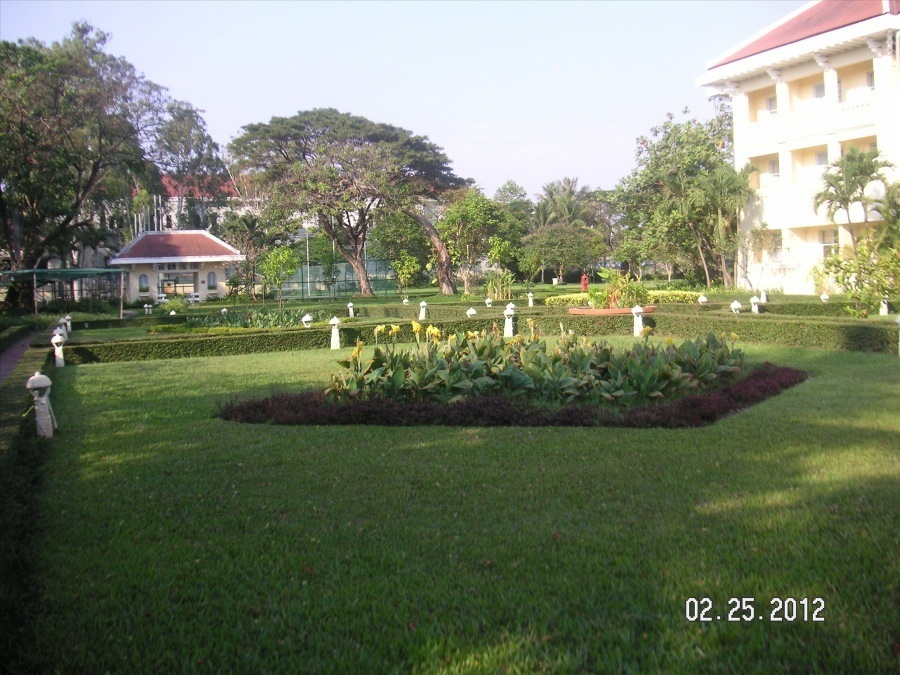
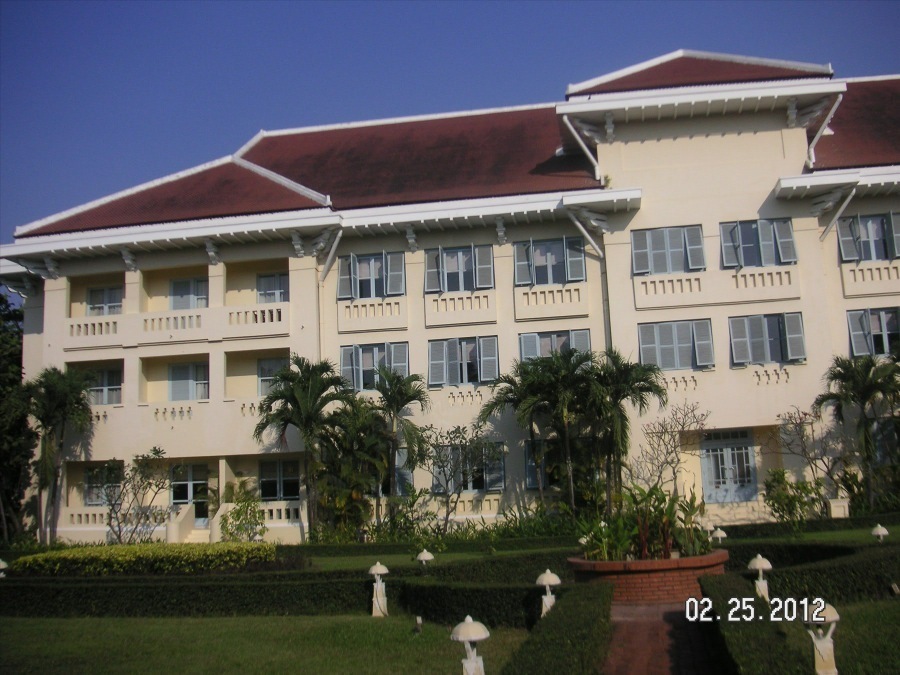
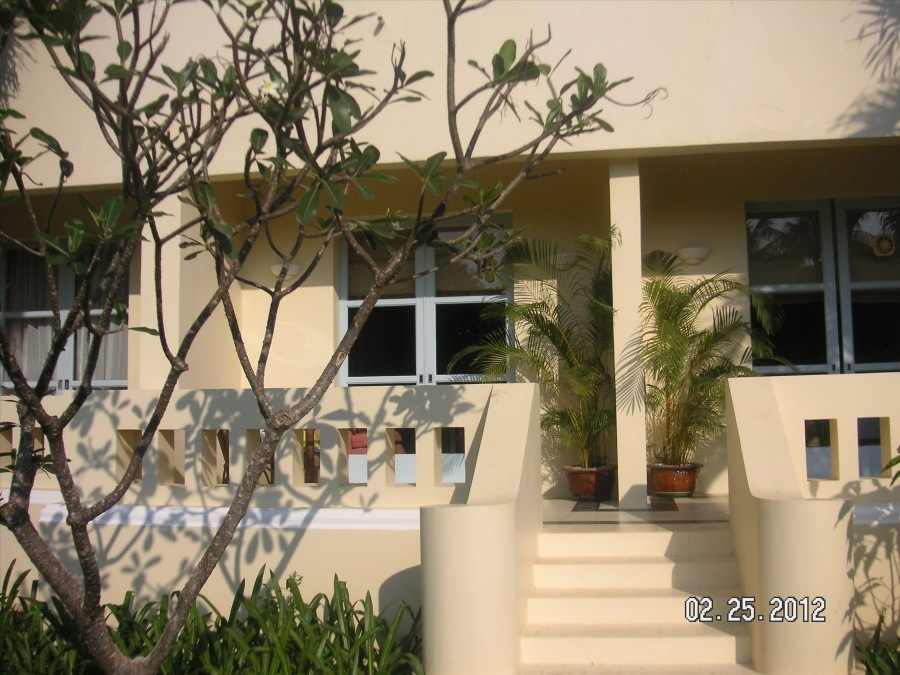

A reminder that the humidity often fogs up the camera lenses
Day Three (February 26th, 2012)
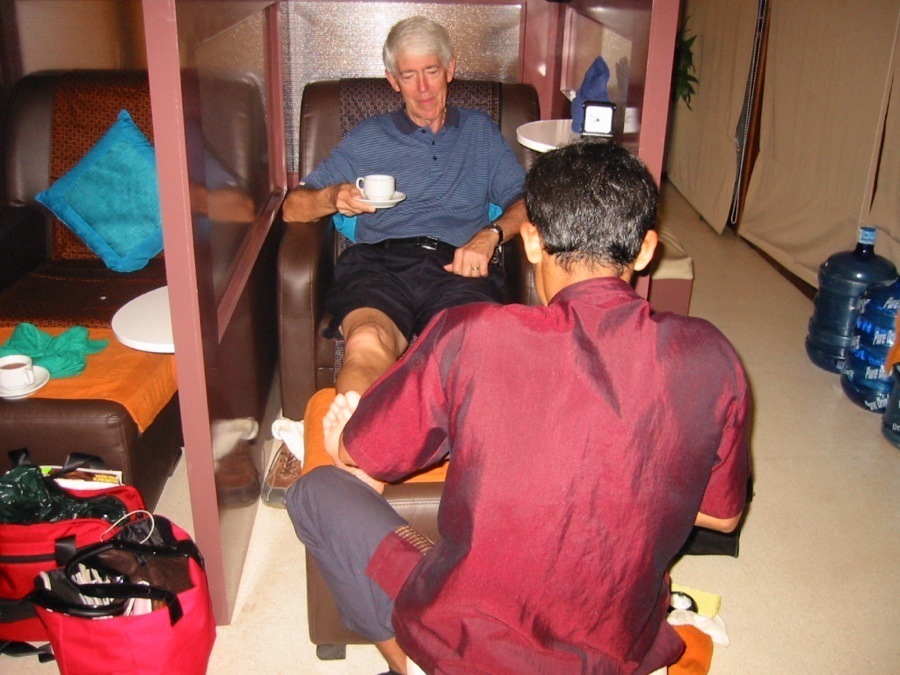
Getting ready for more walking
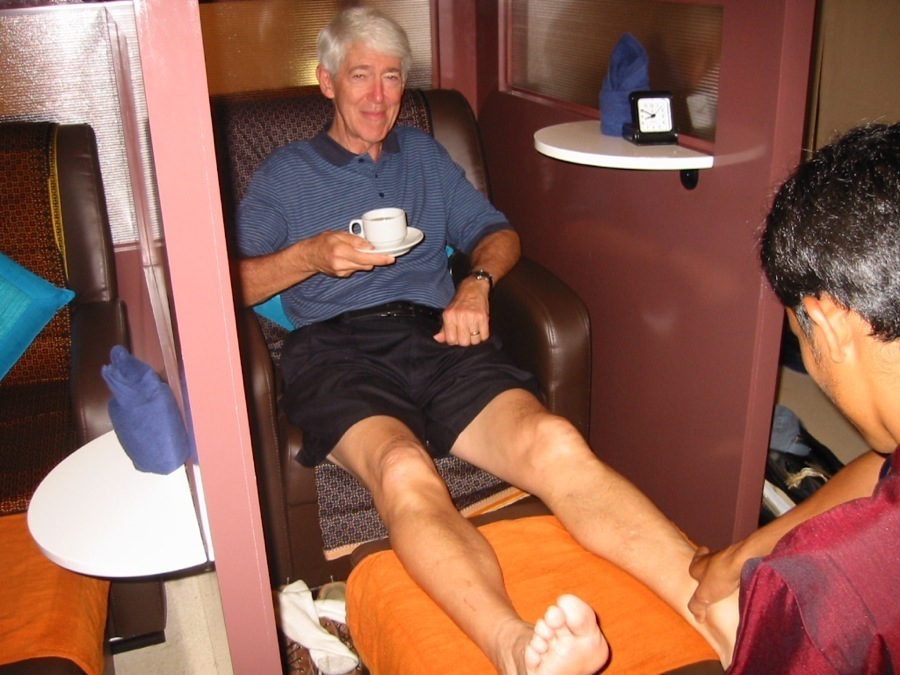
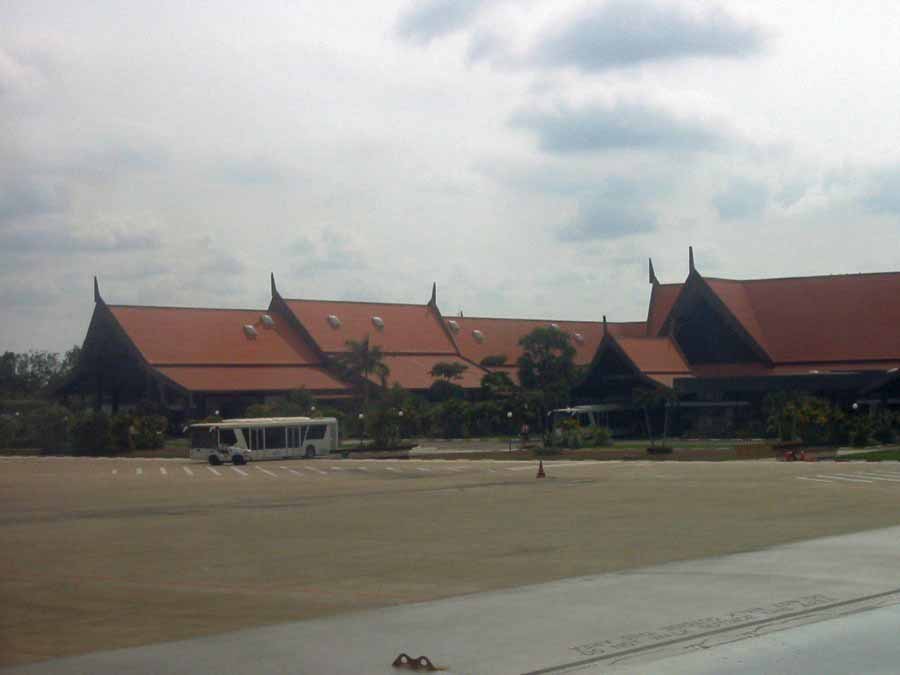

"Hey Bunny... Are you sure this is the high diving board?"
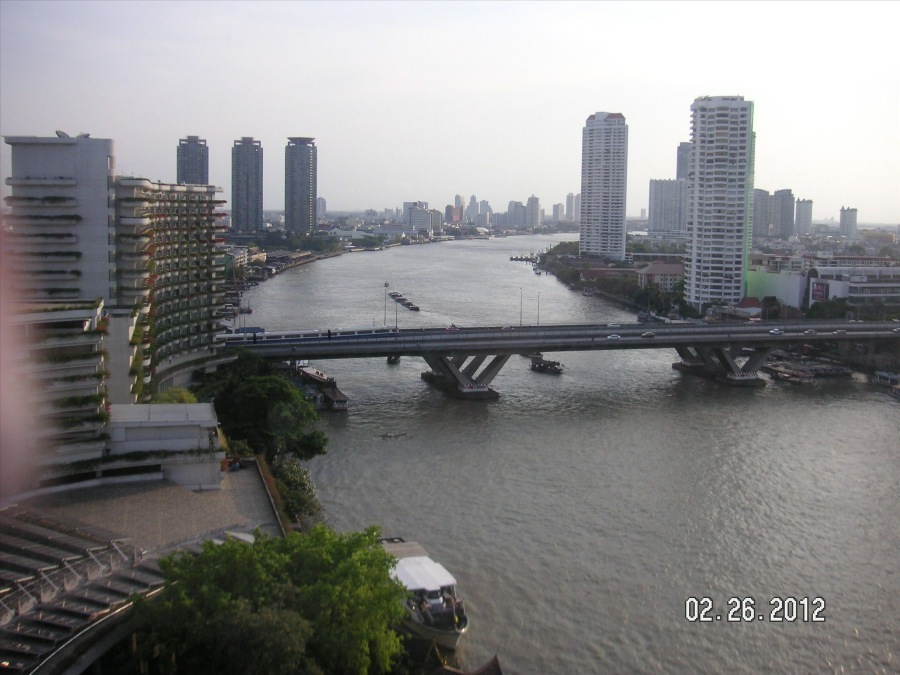

Traditional Cambodian Party Time
Did You Know? - Khmer cuisine (Khmer: សិល្បៈខាងធ្វើម្ហូបខ្មែរ), or more generally, Cambodian cuisine is one of the worlds oldest living cuisines. With an emphasis on simplicity, freshness, seasonality and regionalism – Cambodian food has won praise for its elegant and understated use of spice, its harmonious arrangement of contrasting flavours, textures and temperatures within the overall meal rather than a single dish, and its thoughtful and, at times extravagant presentation of dishes with plenty of herbs, leaves, pickles, dipping sauces, edible flowers and other garnishes and condiments.
The staple food for Cambodians is rice, and today rice is consumed by most Cambodians daily and with all meals, utilizing a great number of cooking styles and techniques. In fact, Cambodians eat more rice than any other people in the world
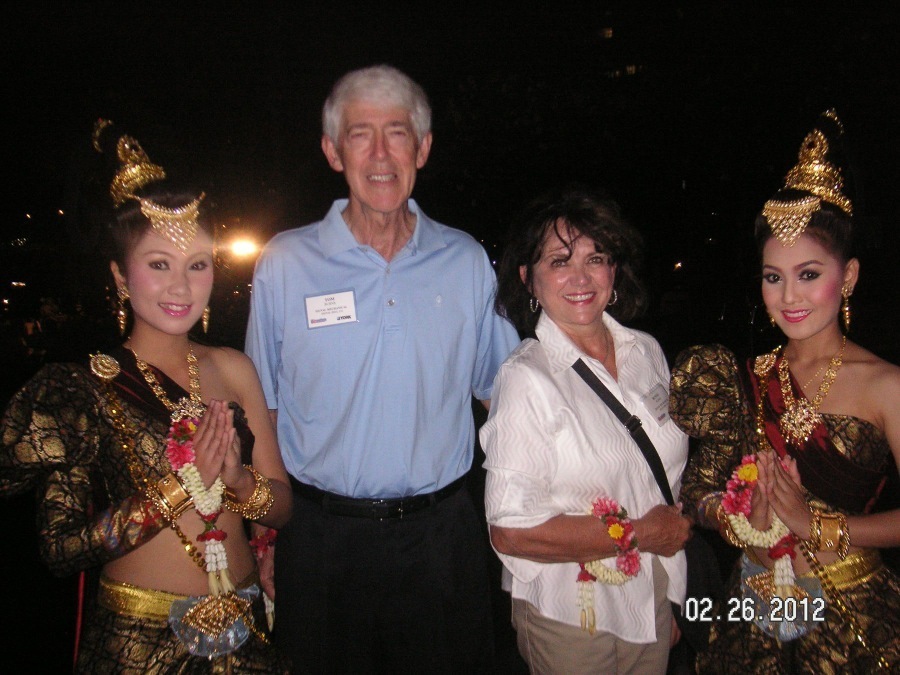

Room with a view??
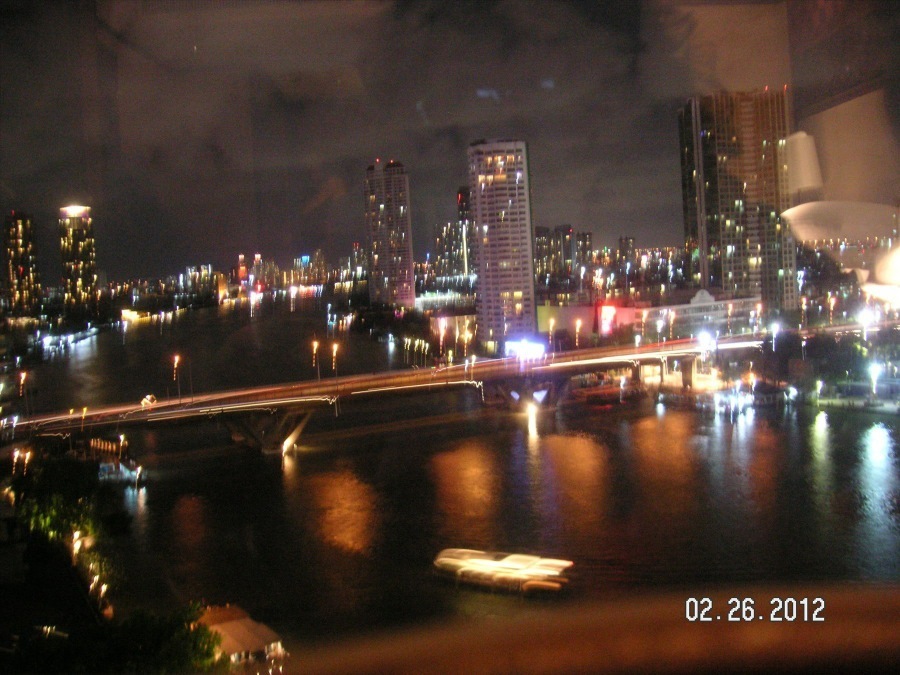
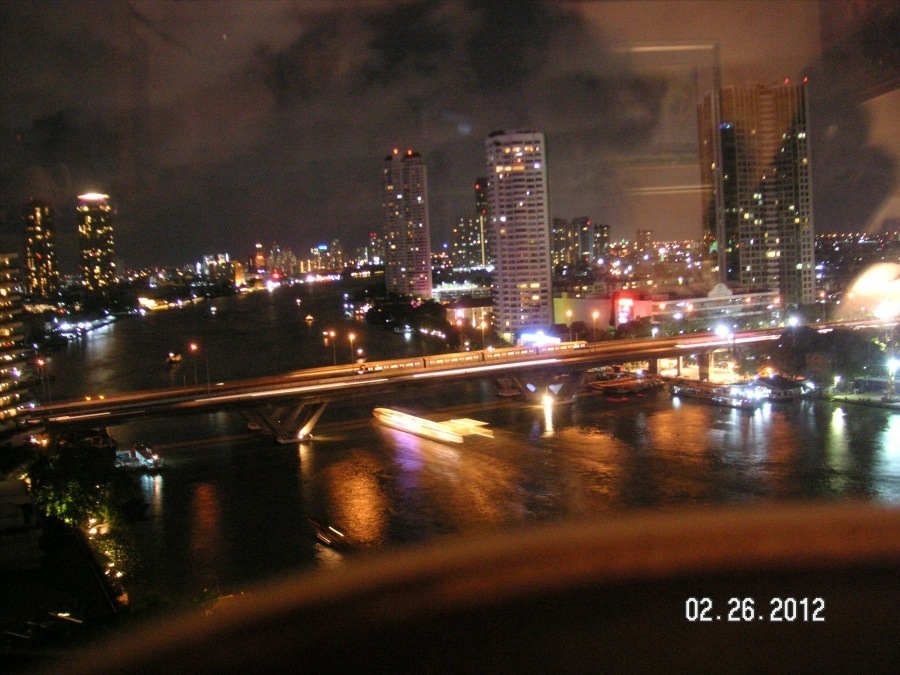
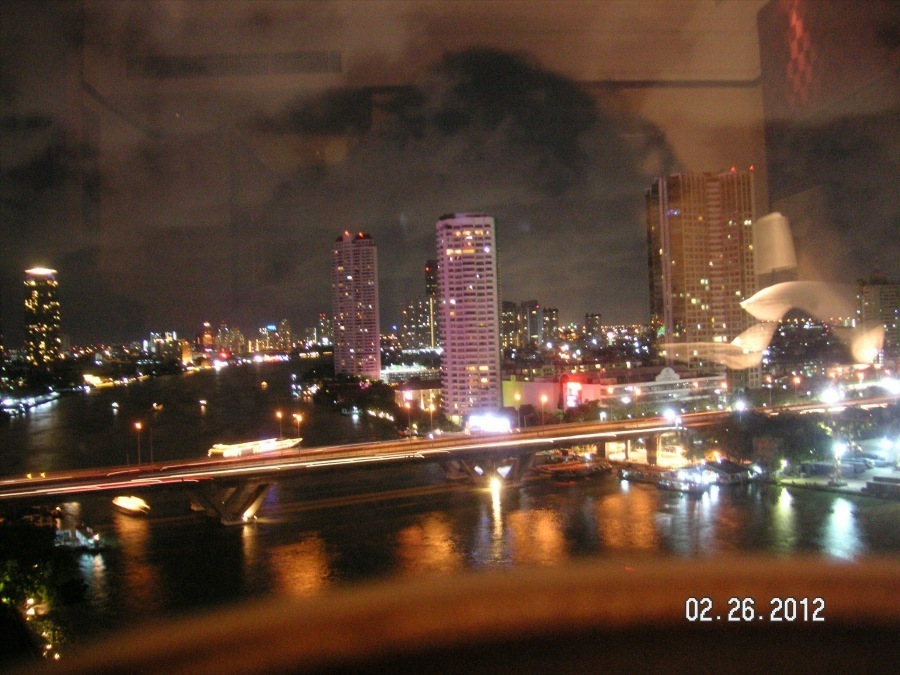
Back to the hotel to rest for a BIG day tomorrow

OMG.... 7:30 AM? We Are Flying? Goodbye Cambodia


